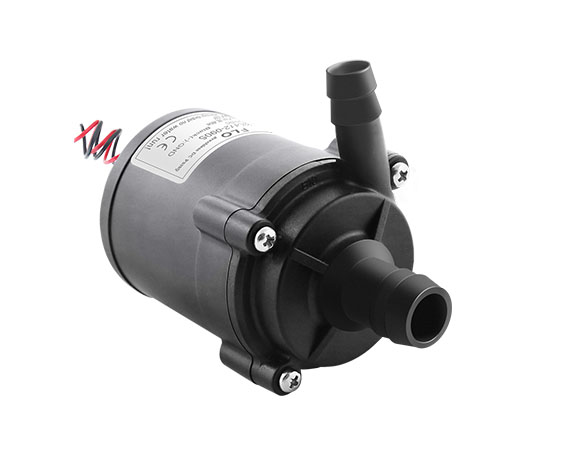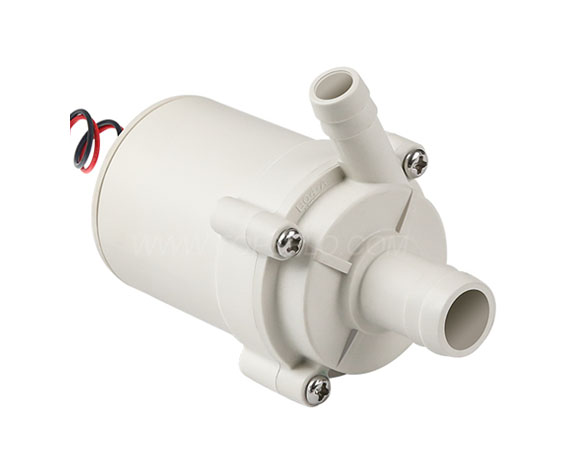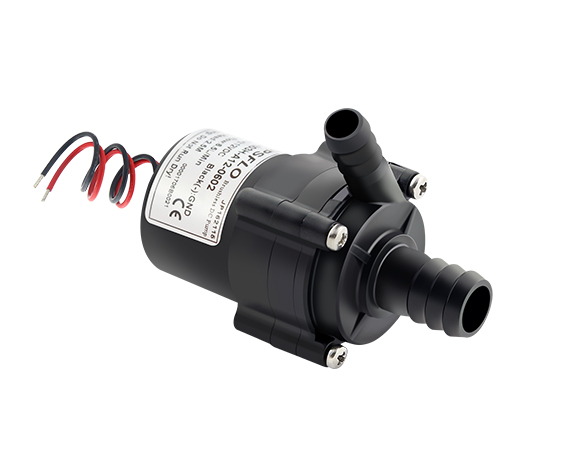
A Comprehensive Guide to the Core Application of PWM Water Pumps in Drinking Water Systems
Answer:
PWM (Pulse Width Modulation) is a technology that precisely controls a DC water pump’s speed by adjusting the duty cycle of pulse signals. The principle involves rapidly switching the control signal (typically 100 Hz–100 kHz) to change the on-off voltage ratio per unit time. This enables linear adjustment of water flow rate.
Advantages of PWM over traditional analog voltage regulation:
• High-precision regulation: Duty cycle adjustment ranges from 1% to 100%, with flow rate error within ±5%.
• Ultra-fast response: Flow rate can adjust in under 20 ms, adapting instantly to varying demand.
Answer:
Hot and cold water dispensers achieve target temperatures by mixing hot water from the heating tank with room-temperature water filtered through RO systems. The formula is:

Key points:
• Cold water flow is usually fixed.
• Hot water temperature is relatively constant.
• Hot water flow rate, controlled via PWM water pump, is the main variable to achieve precise temperature.
Mechanisms for precise control:
1.Multi-scenario adaptation: The main control chip sends PWM signals based on user-selected output (e.g., 45°C milk or 90°C coffee), adjusting the hot water flow from 500 ml/min to 3.5 L/min. High-quality PWM pumps respond quickly to maintain linear and stable flow rates.
2.Real-time temperature compensation: Built-in sensors detect temperature deviations. The PWM duty cycle is dynamically adjusted via a closed-loop “temperature-PWM” control, ensuring high-precision temperature stability.
Answer:
The water pump acts as the “core engine” of the dispenser. Choosing the right PWM pump affects performance, user experience, and lifespan. Key selection criteria include:
• Does the pump meet system design requirements?
• Can it maintain stable output under different pipeline resistances?
• Adequate head ensures smooth delivery of hot water; proper flow rate stabilizes temperature mixing.
• Is the flow rate accurate under varying duty cycles (e.g., 30%, 50%, 70%)?
• Is the flow rate–duty cycle curve linear?
• Non-linear pumps compromise MCU control, causing temperature inaccuracies.
• Is output consistent under the same duty cycle?
• Is performance stable across time and different units?
• Ensures reliable product experience and protects brand reputation.
• Can the pump respond quickly to PWM commands?
• Brushless motor designs enhance lifespan and reliability.
• Is the pump noise low during low/high-speed operation?
• Brushless designs reduce wear, offer quieter operation, and extend service life—especially valuable for night use.
Answer:
PWM water pumps transform dispensers from functional devices into experience-oriented products. They:
• Enable precise flow rate and temperature control.
• Balance temperature and flow through system-level synergy.
• Support high-end product quality, reliability, and user comfort.
 |
 |
 |
| Hot water pump TL-B10 | Hot water pump TL-B04 | Hot water pump TL-B03 |
Industry insight:
Topsflo provides intelligent PWM water pump solutions that are linearly precise, responsive, quiet, and durable, enhancing competitiveness for premium drinking water systems.
Optimizing Solvent Consumption in Solvent-Based Inkjet Printers How Smart Ink Pumps Reduce VOCs, Improve Efficie…
TF51 New Product Specification: Max Flow 2.5L/M; Max Pressure 12.5bar In today’s era of rapid development in in…
